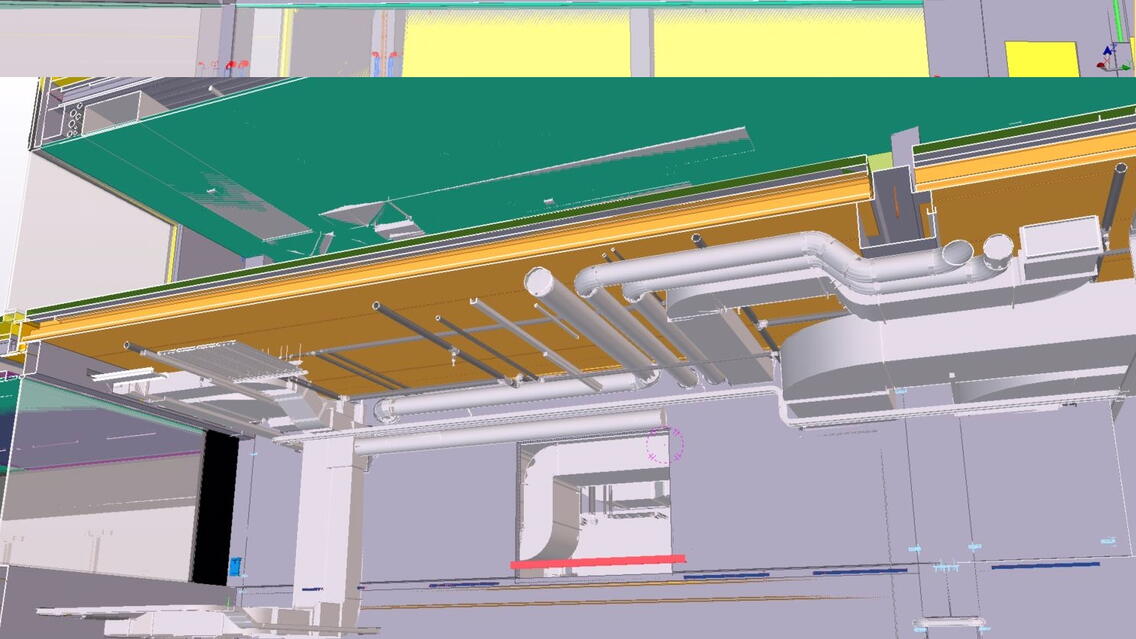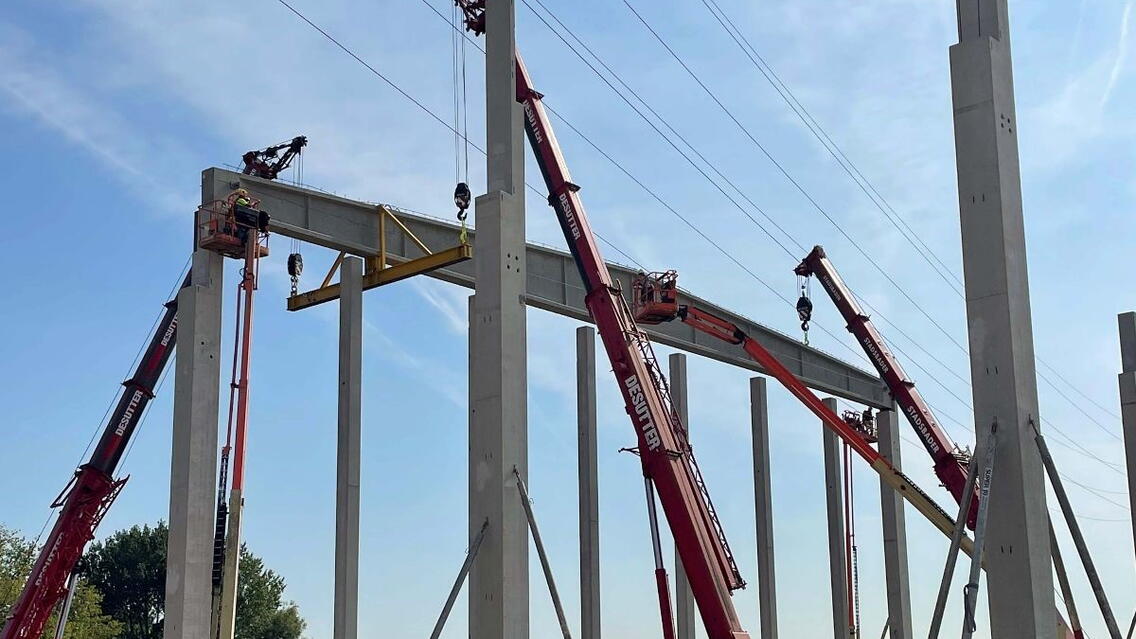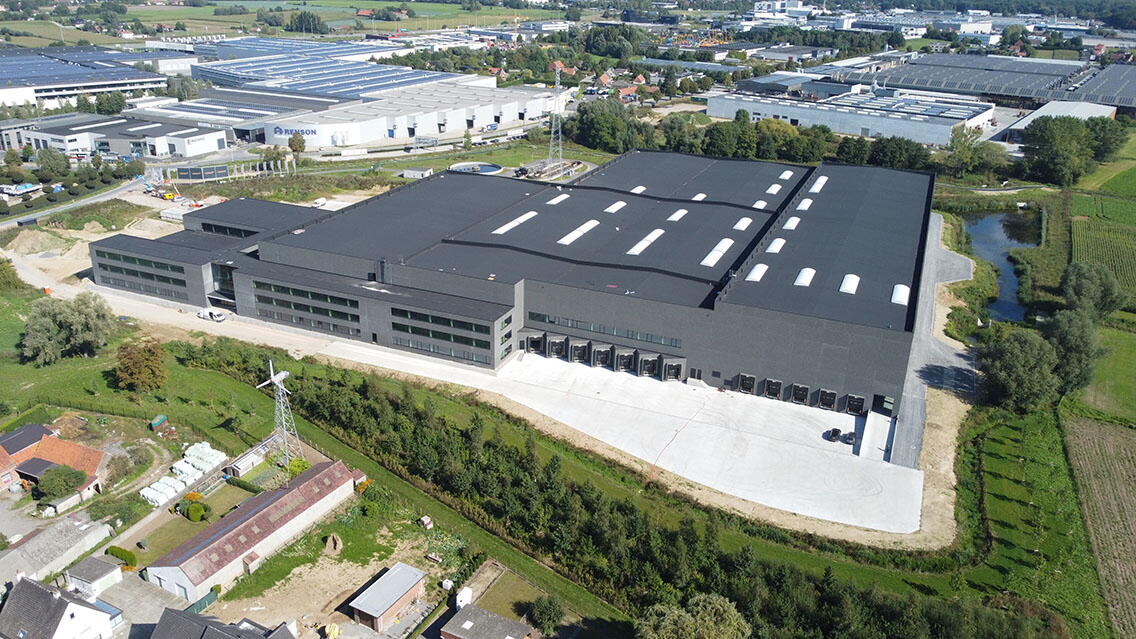Locinox has assigned Stadsbader NV to build its new industrial building in Waregem. Locinox develops and manufactures fittings for fencing and gates, most of which are exported. The growing company has the ambition to become the number one worldwide in this sector.
The brand new factory with an operating area of 40.000 m² is 3x larger than the current one and is called the “Smart Factory.” In addition to a warehouse, a packaging department and the production, it will be equipped with pleasant and ergonomic workstations, an experience center, relaxation areas, a spacious green patio, roof terrace and more than 1,5 hectares of green space with a picnic meadow. On top of that, the new building features possible expansion. The warehouses end with prestressed beams and removable walls and columns. The office is also foreseen to have an additional floor on top.
A major challenge with this project was the high-voltage power lines that run across the new building. We modeled these in Tekla based on 2D drawings from the transmission system operator. In order to know the position of the high-voltage cables, the various possible weather conditions affecting them were taken into account. A danger zone with a diameter of 7 to 9 meters, depending on which cable, was also taken into account around these cables. In this way, we could determine which prefabricated elements had to be assembled using special techniques. A specific example of this is a prestressed beam with a length of 40 m and a weight of 40 tons for which we designed a lifting yoke. The beam was assembled using three cranes. This enabled us to bring the lifting point under the beam so the cranes were just outside the danger zone around the high-voltage cables.
The entire precast superstructure, modeled with a LOD400-LOD450, was worked out in Tekla Structures. The tight schedule forced us to work in Tekla with 5 five modelers at the same time. This was made possible by using Tekla Model Sharing. From this model, assembly plans and production drawings were extracted for use at our production site, Van Maercke NV. Based on PXMLs, Unitechniks, and BBS files, the production planning, post-calculation, and invoicing were created. The 3D models could be consulted both in the office and on-site using Trimble Connect.
All techniques were delivered in a separate IFC model. In Trimble Connect, clashes between the techniques and the building were managed using ToDo’s. In consultation with the BIM coordinator, we came up with a solution for all the techniques. These solutions were complex in terms of stability.
Finally, with the in-house developed planning tool, the status of each element in the ERP package (drawn, scheduled, produced, or assembled) was visualized in Trimble Connect at any possible time. This way, everyone involved on the site can see the status of each precast element at any time, and adjustments can be made to the plans when necessary.





